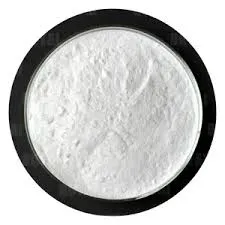
nov . 08, 2024 06:53 Back to list
HPMC Applications and Benefits in Modern Construction Techniques and Materials
The Significance of HPMC in Construction An In-Depth Analysis
Hydroxypropyl Methylcellulose (HPMC) is a cellulose-derived polymer that has gained significant traction in the construction industry due to its versatile properties and multifaceted applications. With the continuous evolution of construction techniques and materials, HPMC stands out as an essential component that enhances the quality, performance, and efficiency of various construction products.
What is HPMC?
HPMC is a non-ionic, water-soluble polymer made from cellulose via an etherification process. It is known for its ability to form a viscous solution in water, which can be useful for various applications. In construction, HPMC serves as a thickening agent, film-forming agent, and as a stabilizer, among other functions.
Applications of HPMC in Construction
1. Cement-based Mortars One of the most prevalent uses of HPMC in construction is in cement-based mortars. It improves the workability of the mortar, allowing for easier application and spreading while enhancing adhesion to surfaces. HPMC helps in maintaining the consistency and viscosity of the mixture, preventing segregation of the components and ensuring a homogenous blend.
2. Tile Adhesives HPMC is a critical ingredient in tile adhesives, owing to its excellent binding properties. It enhances the adhesion between tiles and substrates, ensuring a durable bond that withstands various stresses. Additionally, HPMC provides extended open time, allowing users ample time to adjust tiles before the adhesive sets, which is crucial for ensuring correct placement.
3. Plaster and Rendering When used in plaster and rendering applications, HPMC improves the workability and smoothness of the application. It provides a creamy consistency that simplifies the application process and enhances the finish of the plaster, making it an attractive option for both interior and exterior walls. Furthermore, HPMC helps in reducing the shrinkage of the plaster as it dries, which minimizes cracking.
4. Dry Mix Products In dry mix mortars and construction materials, HPMC acts as a crucial component that affects flow properties and water retention. Its water-retaining capability is significant during the curing process, as it ensures a sufficient amount of moisture remains in the cement for proper hydration. This enhancement can lead to improved strength and durability of the cured material.
hpmc for construction

5. Sealing and Coating HPMC is also employed in various sealing and coating products, providing enhanced adhesion and flexibility. Its film-forming properties allow for the creation of protective layers on surfaces, improving their resistance to environmental factors such as moisture and pollutants.
Benefits of Using HPMC in Construction
- Improved Workability The addition of HPMC to construction materials optimizes workability, making them easier to mix and apply. This improvement translates into greater efficiency on job sites, leading to time and labor savings.
- Enhanced Adhesion HPMC contributes to superior adhesion properties, which is critical for ensuring the longevity of construction applications. This property helps mitigate issues related to detachment or failure of installed materials.
- Water Retention One of the standout features of HPMC is its water-retaining capacity. This quality is essential for ensuring adequate hydration of cement-based mixtures, which is pivotal for achieving desired strength and durability.
- Versatility The versatility of HPMC allows it to be used in various applications across the construction industry, making it a valuable additive for manufacturers looking to enhance their product offerings.
Conclusion
In conclusion, Hydroxypropyl Methylcellulose (HPMC) has established itself as a vital material in the construction industry, with its diverse applications ranging from mortars and adhesives to plasters and coatings. Its ability to improve workability, enhance adhesion, and retain moisture makes it an indispensable component for modern construction practices. As the industry continues to evolve, the role of HPMC is likely to become even more significant, addressing the growing demands for efficiency, sustainability, and durability in building projects. Embracing HPMC can lead to not only improved quality of construction materials but also a more streamlined and efficient construction process overall.
-
The Widespread Application of Redispersible Powder in Construction and Building Materials
NewsMay.16,2025
-
The Widespread Application of Hpmc in the Detergent Industry
NewsMay.16,2025
-
The Main Applications of Hydroxyethyl Cellulose in Paints and Coatings
NewsMay.16,2025
-
Mortar Bonding Agent: the Key to Enhancing the Adhesion Between New and Old Mortar Layers and Between Mortar and Different Substrates
NewsMay.16,2025
-
HPMC: Application as a thickener and excipient
NewsMay.16,2025
-
Hec Cellulose Cellulose: Multi functional dispersants and high-efficiency thickeners
NewsMay.16,2025







